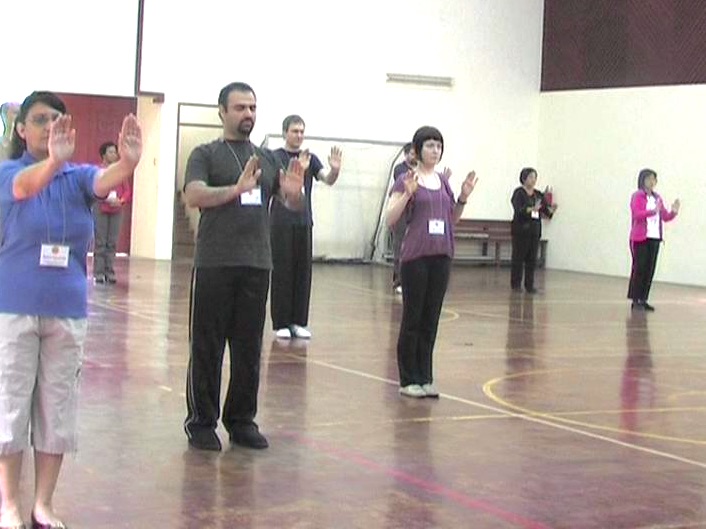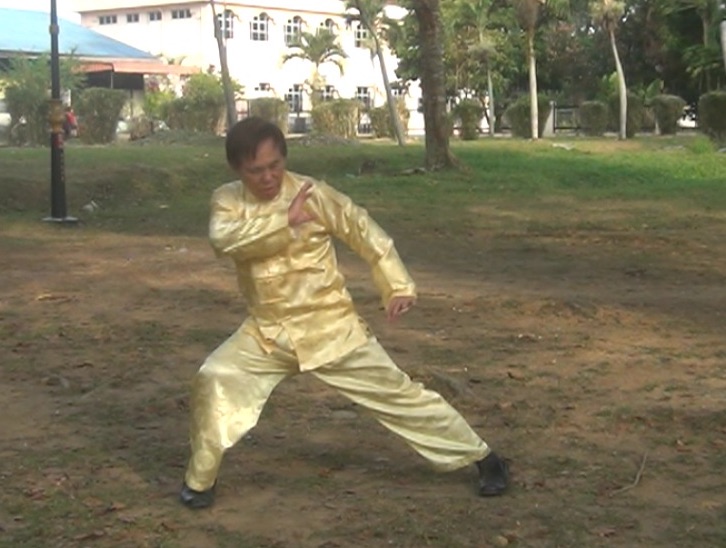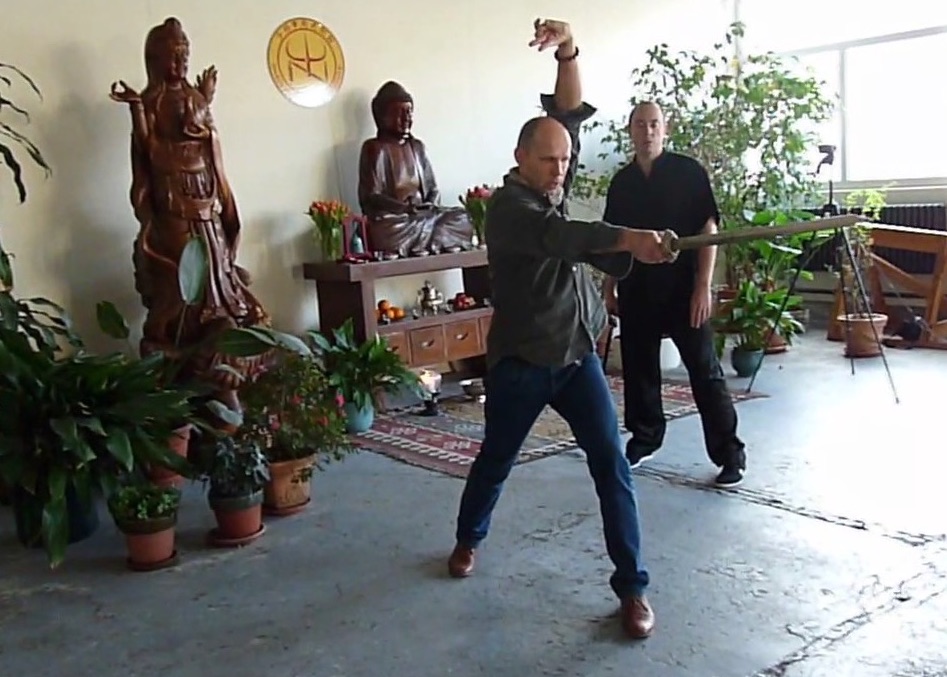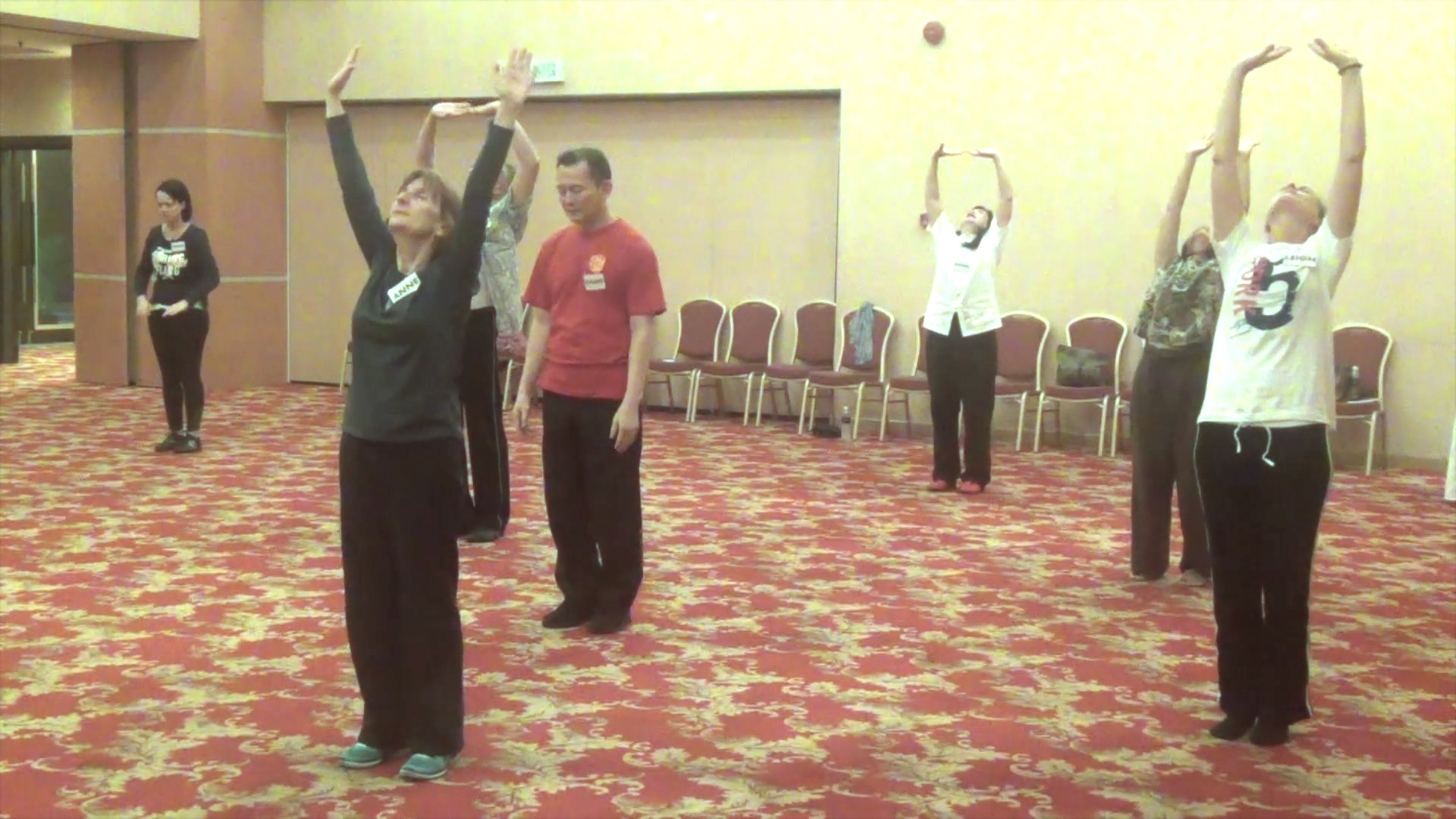SELECTION OF QUESTIONS AND ANSWERS
FEBRUARY 2019 PART 3

Practicing chi kung is a good way to develop mental clarity
Question 1
What is mental clarity?
— Matthew, USA
Answer
Mental clarity is self-explanatory. It means the mind is clear. Obviously when the mind is clear, it is more efficient than when the mind is dulled or when the mind is crowded with ideas.
Hence, presuming that the I.Q or intelligent quotient is the same, when ones mind is clear he can think better and intellectualize better than when his mind is dull or full of ideas. In fact, he can do anything better when his mind is clear.
Question 2
You say that practicing chi kung is a good way to develop mental clarity. One of the conditions to practice chi kung is not to think of anything. But many Westerners are worried that if they do not think of anything, they may become stupid. How do you reconcile these two concepts?
Answer
Thank you for asking this question. This question has confused many people. As you have rightly said, many people, especially in the West, are worried when they are asked not to think of anything.
Not to think of anything, or keeping their mind free of thoughts, is one of the two necessary conditions to practice genuine chi kung. The other necessary condition is to be relaxed.
In chi kung jargon, these two conditions are said to be in a chi kung state of mind. In other words, when a person is in a chi kung state of mind, he is relaxed and free of thoughts at the same time.
To be in a chi kung state of mind is an essential condition to practice chi kung. If a person is not in a chi kung state of mind, he is not practicing chi kung, although he may use chi kung techniques.
A good analogy is Taijiquan, usually called Tai Chi Chuan in English. Many people say that they practice Taijiquan, which is a wonderful internal martial art, because they use Taijiquan techniques. Actually they do not practice Taijiquan, because there is nothing internal and nothing martial in what they do.
"Chi kung state of mind" is a modern term, coined by the great chi kung master, Yan Xin, of China. In the past it was referred to as "entering silence".
One of the necessary two conditions to practice genuine chi kung is to free the mind of all thoughts. If he has practiced genuine chi kung daily for six months, he has freed his mind of all thoughts for six months. By then freeing the mind of all thoughts will have become habitual for him.
In other words, it has become habitual for him to have mental clarity, which will enable him to have better result no matter what he does. Hence practicing chi kung -- genuine chi kung, not just exercise that uses chi kung techniques -- is a very good way to develop mental clarity.
A main reason why some people are worried to free their mind of all thoughts is because they are worried that by freeing their mind of all thoughts they may be unable to think. Willingly freeing the mind of all thoughts and the inability to think are totally different issues. For example, willingly not wanting to move vigorously, like sitting on a chair, and an inability to move vigorously, like not being able to play games, are totally different issues.
When a person succeeds in freeing his (or her) mind of all thoughts, he has mental clarity. When he has mental clarity, when he chooses to think or intellectualize, he can have much better result.
Today, a major problem faced by most people is that they cannot free their mind of all thoughts. They think or intellectualize unnecessarily.

Tame Tiger with a String of Beads
Question 3
Thank you for your work in martial arts and for your time in considering my questions.
I've trained in martial arts for about 17 years now, and I am currently training in traditional Long-Fist and Yang style Taijiquan. I believe traditional Chinese martial arts have the most and best to offer the martial artist for self-defense, health, fitness and more.
However, I always strive to test, especially via no contact and contact sparring, the combat side of techniques and to make sure they're actually practical in true combative situations.
I noticed an application of "Tame Tiger with Beads" on page 78 of your book on the "Art of Shaolin Kung Fu". My understanding is that this is suggested as a defense against a side kick or a roundhouse kick. I understand the effectiveness of such a "drop dragon" type of technique (where you drop low on the back leg) to counter kicks with rotation. I've even used such to my advantage in full-contact sparring to defend against roundhouse and especially crescent kicks.
But I do wonder about its effectiveness in response to a side kick or front kick. Would it not be quite easy for the opponent to simply bring their foot down on the exposed ankle/shin/knee of the person in "Taming Tiger with Beads" pattern?
I've been reading the articles on your website about applying forms and patterns to sparring and real life. But how do you suggest is the best way exactly for that to be taught/learned? Is it gradually and intentionally working that into no contact or low contact sparring and then heavier contact sparring with protective gear?
— Gantt, USA
Answer
It is pertinent to mention that every pattern in all kungfu sets can be used for combat, though in our law-abiding societies today, combat efficiency is usually not the main reason why we train kungfu. Nevertheless, training kungfu as a martial art will give us benefits which will be very useful in non-combat situations in our daily living.
"Tame Tiger with Beads", which is a pattern in my Shaolin kungfu sets, is an effective defence against a side kick and a roundhouse kick. It can also be used in attack, like breaking an opponent's arm or gripping his groin. In the hands of a skillful practitioner, this pattern can be used against any attack!
There are a few effective counters against an opponent who brings his foot down on the seemingly exposed leg of an exponent using the "Tame Tiger with Beads" pattern. The exponent may, for example, counter with "Old Tree with Roots" (which is sweeping the opponent's leg to fell him), "White Crane Steps on Snow" (which is bringing back the leg to avoid the stepping attack, and immediately stepping on the opponent's knee), or "Yellow Oriole Drinks Water" (which is jumping to avoid the opponent's stepping attack, and simultaneously kicking the opponent's groin).
All kungfu patterns and forms can be used in combat, and all kungfu principles and philosophy can be used in real life. If a practitioner does not know how to use a pattern or form for combat, it is because he does not know, and not because it cannot be used in combat. Except the obvious punches and kicks and their defence, many kungfu practitioners today do not know the combat application of the patterns they practice.
Different practitioners, because of their different nature, developmental stage and other factors, may use different best ways to apply patterns and forms to sparring.
In our school, the usual "best" way is from combat sequences to free sparring. Before learning combat sequences, our students should know the patterns they are going to apply for combat. This is usually done in a kungfu set.
When learning a kungfu set, our students go through four main stages, namely routine, form, flow and force. But before learning a kungfu set, our students learn basic skills, like entering Zen or Tao, right spacing and right timing, regulating their breathing, developing and exploding force.
We do not use protective gear in our sparring, including heavy, full contact sparring. It is because our students know how to stop an inch or two from target if an opponent does not respond in time. This is possible when practitioners have internal force. It is not possible when practitioners use mechanical strength, which often depends on speed. Practitioners need to be fast in their sparring, and when they are fast they may not stop in time. Hence, protective gear is used.
Injuries very rarely happen in our sparring. Many other martial artists are often surprised that in our sparring there is frequently a lot of fun and laughter. If an injury occurs, which is very rare, our students can clear the injury within minutes with chi flow, or energy flow. All our students know chi flow, which not only clear injuries, but more importantly enhance results.
Question 4
Since the Jian is a one handed sword, were swordsmen ambidextrous? Was ambidexterity encouraged/practiced?
— Nareshwar, India
Answer
Swordsmen in the past were not ambidextrous. Their "emperor" hand was better than their "minister" hand. The "emperor" hand, in contrast with the "minister" hand, is the side that people are most effective with. As most people are right-handed, their "emperor" hand is the right hand.
Swordsman usually used only one "jian" or sword held in their right hand. Isn't it advantages to use two hands, with the other hand not necessary holding another sword but any weapon? No, it isn't advantageous. The other weapon will hinder the skillful use of the main weapon.
However, if the weapons are in pair, like Butterfly Knives and hand axes, both hands are used to hold the pair of weapons. Using double swords is mainly for demonstration, like in a sword dance, and not for combat. There are, of course, some rare exceptions.
Once I asked my sifu, Sifu Ho Fatt Nam, whether it was advisable to practice both sides of "Four Gates", the fundamental set of the southern Shaolin Monastery, as the set focused on the right hand. In his typical Zen manner, he asked me whether it was usual for people to be equally good at the left hand and right hand.
I then asked my sifu how about left-handed people as "Four Gates" focused on the right hand. His answer, as always, was typical of a rare master. He replied that the right hand of left-handed people training "Four Gates" would be as good as their "emperor" hand, which in this case was their left hand. This would be a great advantage to left-handed people.
Nevertheless, in some kungfu sets, like the 108-Pattern Yang Style Taijiquan, sometimes called the Long Set, only the left side of Grasping Sparrow's Tail is practiced. Grasping Sparrow's Tail is a sequence of kungfu patterns most important in Taijiquan. Hence, in the 108-Pattern Yang Style Taijiquan practiced in our school, Shaolin Wahnam, I made some modification where both sides of Grasping Sparrow's Tail were practiced.

Swordsmen usually use one sword held in their right hand
Question 5
Sifu, could I ask a brief question about Jingangshou Pusa, known as Vajrapani in Sanskrit. I read that he is the patron saint of Shaolin and an emanation of Guanyin Bodhisattva. Is he more associated with the northern Shaolin Monastery on Song Mountain or also the southern Shaolin Monastery? I also read that he is associated with the staff techniques for which Shaolin is famous. Does he have any special significance for Shaolin Wahnam?
— John, Ireland
Answer
I am not sure of Jingangshou Pusa, or Vajrapani, at the Shaolin Monastery. If he were worshiped at the Shaolin Monastery, it would be the northern monastery at Song Mountain.
There was worshipped at the Shaolin Monastery on Song Mountain a deity known in Chinese as Jingnalau, whom I believe could be Vajrapani. He was a cook at the monastery. One day bandits attacked the monastery, and Jingnalau used his staff to beat all of them. He was regarded as the First Patriarch of Shaolin staff techniques.
Jingnalau or Vajrapani have no special significance for Shaolin Wahnam. The staff we practice is Ho Family Flowing Water Staff, one of the four best staff sets in kungfu circles. It was transmitted out of the Ho Family by my sifu, Sifu Ho Fatt Nam. It originated from Lan Tou Ho, which was his nickname meaning Ho the Wounded Head. He was a famous Shaolin master, about two or three generations after the Venerable Chee Seen, the First Patriarch of Southern Shaolin Kungfu.
I also learned Six-and-Half-Point Staff, which is another famous staff, from Sifu Choe Hoong Choy. Uncle Righteousness was also well known for his staff techniques.
Question 6
I came across the background of the Shaolin Wahnam Kung Fu sets at https://shaolin.org/answers/sp-issues/kungfu-sets.html
You wrote that you have exchanged sets with your childhood friend, Sifu Chow Kok Chee.
"He listed his sets for me to choose, including his best. Naturally I chose the best, namely "Fifth Brother Eight-Trigram Staff" of Hoong Ka Kungfu, "Cosmos Pa Kua Palm" of Choy-Li-Fatt Kungfu, and "Big Boss Fist" of Ngok Ka Kungfu."
Dear Sigung, can you tell me more about "Cosmos Pa Kua Palm" of Choy-Li-Fatt Kungfu, and "Big Boss Fist" of Ngok Ka Kungfu?
— Dimitri, Austria
Answer
The "Cosmos Pa Kua Palm" of Choy-Li-Fatt Kungfu is an advanced set. It uses mainly the palms whereas most Choy-Li-Fatt sets use the fists. At the start of the set there are patterns to develop internal force, which are similar to what I learned in Forceful Big-Windmill of Cosmos Palm, but it is softer like the internal force training in Cotton Palm.
I incorporated the methods in the Choy-Li-Fatt course I conducted from 9th to 13th January 2012 in Oslo. There are also some applications of the "yin" palm, like Continuous Yin-Yang Palm and Lotus Leaves Continuous Palms in Essence of Shaolin.
"Big Boss Fist" of Ngok Ka Kungfu or Kungfu of Yue Family founded by the Song general Yue Fei, is a set using "hard" force. A special feature of the set is the way a fist is held. The knuckle of the middle finger, not the knuckle of the index finger as in a phoenix-eye fist, is protruded in a fist. This way of holding the fist is called big-boss fist, or elephant fist.
The patterns in the set are prosaic. The advancement of the set is due to the advanced skills of the practitioner. Because of the way the fist is held, much force is produced when a punch is executed. The punch is usually aimed at the solar plexus. It was Sifu Chow Kok Chee's favorite way of fighting, and he fought in more than 200 fights.

Practicing genuine chi kung can overcome any illness!
Question 7
Did you learn how to overcome illness from your sifu?
— David, Austria
Answer
The answer is yes and no. I have four sifus, or kungfu masters. They were Sifu Lai Chin Wah, better known as Uncle Righteousness; Sifu Chee Kim Thong, the living treasure of the Peoples Republic of China; Sifu Ho Fatt Nam, the third successor from the southern Shaolin Monastery at Quanzhou; and Sifu Choe Hoong Choy, the patriarch of Choe Family Wing Choon.
All my four sifus, without a single exception, were experts in "thiet ta" (pronounced as "die da" in Mandarin), which I have coined the term "traumatology", which is treating injuries due to falls or being hit. In fact, I learned Wing Choon Kungfu from Sifu Choe Hoong Choy because I wanted to continue my "thiet da" studies after Sifu Ho Fatt Nam.
I did not learn "thiet da" from Uncle Righteousness or from Sifu Chee Kim Thong. I learned kungfu from them.
In this sense the answer to your question is "yes", if we regard treating injuries the same as treating illness, which I reckon was what you meant by the term "illness". Actually there is a difference between injury and illness.
An injury occurs because of some external factors, but a patient still functions normally. In an illness, a patient does not function normally. Treating an injury as an illness may be detrimental.
On the other hand, my main treatment is chi kung therapy, which deals with illness and not injury. I did not formally learn chi kung therapy from any of my sifus, though they would have influenced me indirectly. Then, how did I learn chi kung therapy?
My learning of chi kung therapy was mainly due to my teaching of chi kung. I have a huge collection of kungfu and chi kung classics, and I have read from the classics that practicing chi kung as well as chi kung therapy can overcome any illness.
It may be worthwhile to make a difference between chi kung practice and chi kung therapy. Practicing chi kung is practicing chi kung on ones own, whereas chi kung therapy is having a healer treating a patient with chi kung.
When I taught chi kung to the public, a lot of people with so-called incurable diseases like asthma, diabetes, heart problems, emotional disorders and cancer, overcame their health problems. At first this was through chi kung practice. They were my students practicing chi kung, and not my patients whom I prescribed chi kung therapy.
But later I set up a clinic using chi kung therapy to help patients. Although chi kung therapy can help patients with so-called incurable diseases to be healthy again, personally I prefer to teach chi kung to healthy persons so that they will be happy, healthy, full of vitality and enjoy longevity.
Question 8
You have said that chi kung can overcome any illness. Can you please say more on this?
Answer
It is true that chi kung can overcome any illness, including what in the West is regarded as "incurable", like cancer, heart problems, asthma, diabetes, auto-immune syndrome, arthritis depression and phobia. In fact I was awarded "Qigong of the Year" in 1997 at the 2nd World Qigong (Chi Kung) Congress in San Francisco for my work in helping many patients overcome cancer.
In traditional Chinese medical philosophy, all illness is caused by energy blockage. "Energy blockage" is a Chinese medical jargon which means that energy is prevented to flow to various cells, glands, organs or systems to enable them to function the way they are meant to.
If, for example, a person's heart works the way his heart is meant to work, he will not have any heart problems. If mutation is controlled by his natural functioning, he will not have any cancer. If negative emotions are flushed out of his body, which actually is a natural process, he will not have any depression. In other words, if all his cells, glands, organs and systems are working the way they are meant to work, the person will be healthy.
However if any of these cells, glands, organs and systems is not functioning naturally, he will be sick. In Chinese medical philosophy, his sickness is expressed as "yin-yang disharmony". Harmonious energy flow, by clearing energy blockage, is effective in overcoming yin-yang disharmony or illness.
Chi kung is an excellent way to generate a harmonious energy flow which clears energy blockage. Once harmonious energy flow is restored, a patient recovers his good health as a matter of course.
However, genuine chi kung is rare today. When people say that they practice chi kung, it usually means that they use chi kung techniques to practice gentle physical exercise without any energy flow. Gentle physical exercise does not overcome illness, no matter for how long or how beautifully practitioners may perform it.
A good analogy is Taijiquan, often spelt as Tai Chi Chuan. When people say that they practice Taijiquan, it usually means that they use Taijiquan techniques to practice external form, without internal force and without combat application. External form does not give internal force or combat application no matter for how long or how beautifully practitioners perform it.
LINKS
Selected Reading
- The Wonderful Benefits of Chi Kung
- Special Weapon Course
- Traveling Dragon Sword
- Looking at Diseases from the Chinese Medical Perspective
- Simply Delicious
